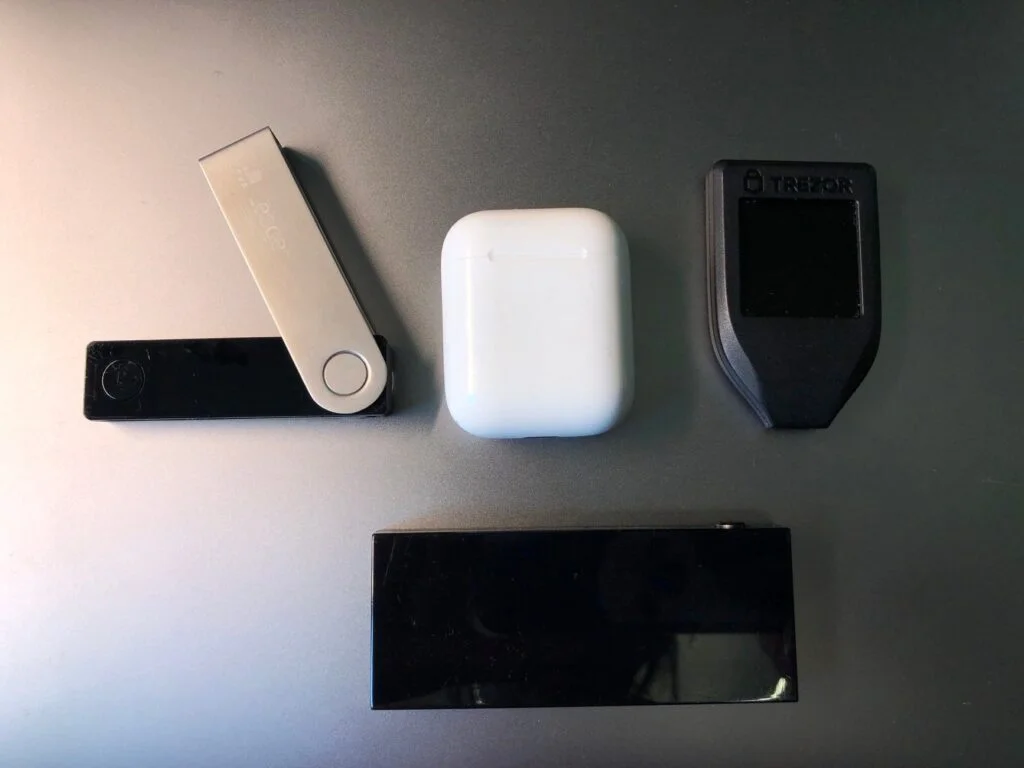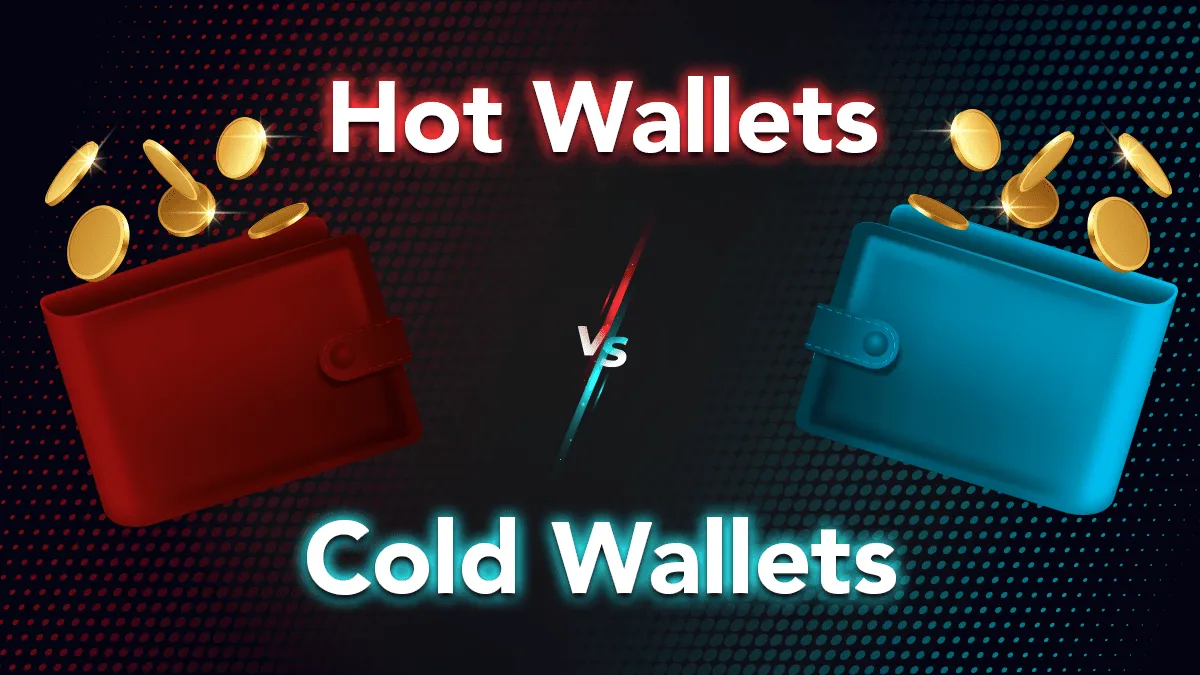Hot and cold wallets are used to store your cryptocurrencies, specifically your private keys which grant you access to your crypto assets. They are therefore a crucial element of the cryptocurrency space.
The major difference between hot and cold wallets is that hot wallets are connected to the internet whilst cold wallets are not.
For those holding cryptocurrencies, the choice between cold and hot wallets depends on factors such as the amount of coins you hold, the frequency in which you trade etc.
Hot Wallets
Hot wallets are connected to the internet and are generally more popular.
Examples of Hot Wallets
| Wallet Name | Supported Coins | Platforms | Key Features | Best For |
| Best Wallet | 1,000+ | Mobile | Non-custodial, multi-chain, portfolio tools | Overall |
| Zengo | 120+ | Mobile | MPC security, beginner-friendly | New crypto users |
| Binance Wallet | 460+ | Mobile | CEX integration, fast trading | Exchange users |
| Bybit Wallet | 750+ | Mobile, Browser | Secure Web3 access, staking | Web3 and DeFi users |
| OKX Wallet | 330+ | Mobile, Browser | dApp support, multi-chain | dApp explorers |
| SafePal | 1,000+ | Mobile, Browser | Hardware wallet integration | Hybrid users |
| CoolWallet | 200+ | Mobile | Scam protection, Bluetooth hardware option | Security-focused users |
| CoinSpot Wallet | 300+ | Mobile, Web App | Australian market focus | Regional users (Australia) |

Pros
- Instant Access: Always online, making it ideal for frequent trading, staking, and spending.
- Free & User-Friendly: Most hot wallets are free and offer intuitive interfaces for beginners.
- Mobile Integration: Seamless compatibility with smartphones, wearables, and browser extensions.
- DeFi & NFT Ready: Direct access to decentralized apps and NFT marketplaces without needing external tools.
- Cloud Sync & Recovery: Many wallets now support encrypted cloud backups and multi-device sync for easier recovery.
Cons
- Still Vulnerable to Hacks: Despite improved encryption and two-factor authentication, hot wallets remain exposed to phishing, malware, and SIM-swap attacks.
- Custodial Risk: If you store assets on exchange-linked wallets, you’re still at risk from platform failures or regulatory shutdowns.
- Privacy Trade-offs: Many mobile wallets now require KYC or link to identity data, reducing anonymity.
- Device Dependency: Losing access to your phone or computer can lock you out, especially if recovery options aren’t properly set up.
- Limited Offline Protection: Unlike cold wallets, hot wallets are always online, making them unsuitable for long-term, high-value storage.
Cold Wallets
Cold wallets are also known as hardware wallets. They are physical offline storage devices that you plug into your computer to use.

Examples of Cold Wallets
| Wallet Name | Number of Supported Coins | Platforms | Key Features | Best For |
| Ledger Nano X / S Plus | 5,500+ | Hardware, Mobile | Bluetooth support, secure chip, Ledger Live app | Users needing broad coin support and mobile access |
| Trezor Model T / Safe 5 | 1,000+ | Hardware | Passphrase protection, open-source firmware, enhanced security | Users prioritizing open-source tools but aware of hardware risks |
| KeepKey | 40+ | Hardware | Large display, ShapeShift integration | Simplicity and visual clarity |
| Cold Wallet (CWT) | 1,,000+ | Hardware, Mobile | Cashback rewards, native CWT token, Plus Wallet acquisition | Users seeking rewards and ecosystem integration |
| Ellipal Titan 2.0 | 10+ | Hardware | Air-gapped QR code transactions, tamper-proof design | Offline security and remote attack resistance |
| BitBox02 | 20+ | Hardware | Dual-chip architecture, microSD backup, Swiss-made | Privacy-conscious and minimalist users |
Pros
- Top-tier Security: Offline storage plus biometric authentication keeps assets safe from online threats.
- Broad Asset Support: Compatible with thousands of coins and NFTs across major blockchains.
- Advanced Backup Options: Features like Shamir Backup and encrypted microSD recovery reduce risk of loss.
- DeFi Access: Secure bridges and apps allow staking and trading without exposing private keys.
- Tamper-Proof & Transparent: Open-source firmware and tamper-evident hardware ensure trust and auditability.
Cons
- Cost Still a Barrier: Prices range from $79 to $199 depending on features like biometric security and multi-chain support.
- Less Convenient for Active Trading: Transferring assets to exchanges for trading still adds friction, though some wallets now offer direct DeFi access.
- Setup and Maintenance: Initial setup takes time, and firmware updates require manual steps to maintain security.
- Physical Risk: Devices can be lost, stolen, or damaged—though encrypted backups and recovery protocols have improved.
- Limited Mobile Experience: Despite Bluetooth and mobile apps, cold wallets remain less seamless than hot wallets for on-the-go use.
Conclusion
While cold wallets still require more effort to set up and use, they remain the gold standard for long-term crypto security. With biometric authentication, encrypted backups, and broader asset support, they’ve become more user-friendly without compromising safety.
Hot wallets, on the other hand, continue to dominate for everyday use. Their integration with DeFi platforms, NFT marketplaces, and mobile devices makes them ideal for active traders and casual users. However, risks from hacks and custodial failures persist—even in 2025.
Best practice: Keep small amounts in hot wallets for daily transactions and trading. Store the bulk of your holdings in cold wallets, and transfer profits promptly to secure offline storage. This hybrid approach balances convenience with protection.

Angela Wang
Angela loves cryptocurrency, technology that improves our lives...and food. Anything that merges these worlds together is even better.
